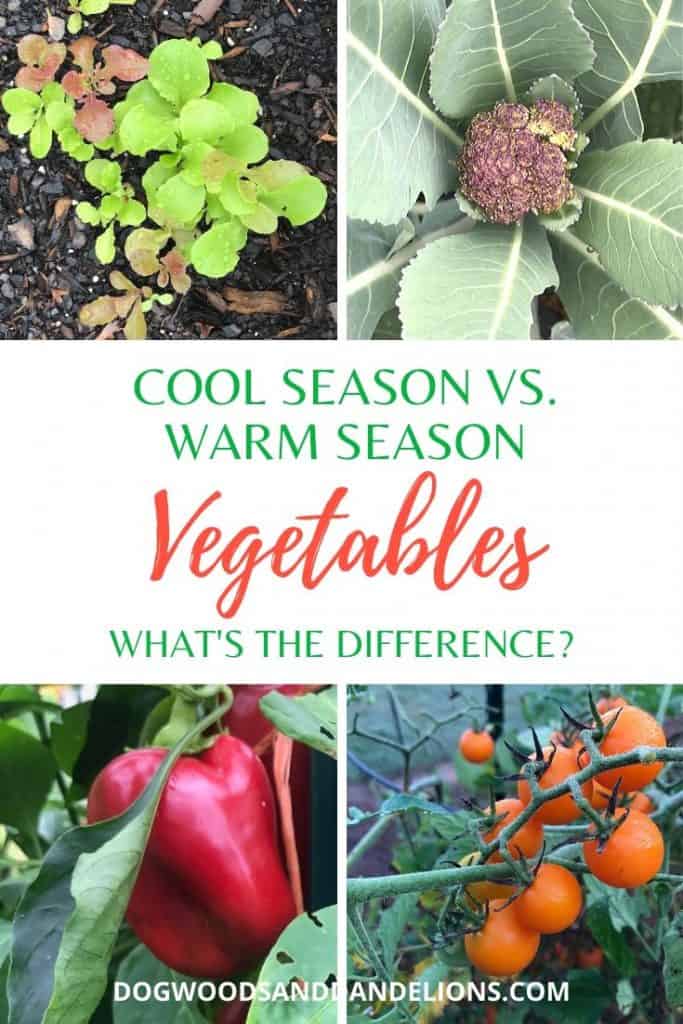Cool Season Vegetables vs. Warm Season Vegetables
Beginning gardeners often get confused about when to plant what crops. I’ve seen so many people wait too late to start cool season vegetables and yet put out their tomatoes and peppers way too early.
After reading this post, you should understand the difference between cool season vegetables and warm season vegetables and have a better idea of when to plant these crops in your backyard garden.
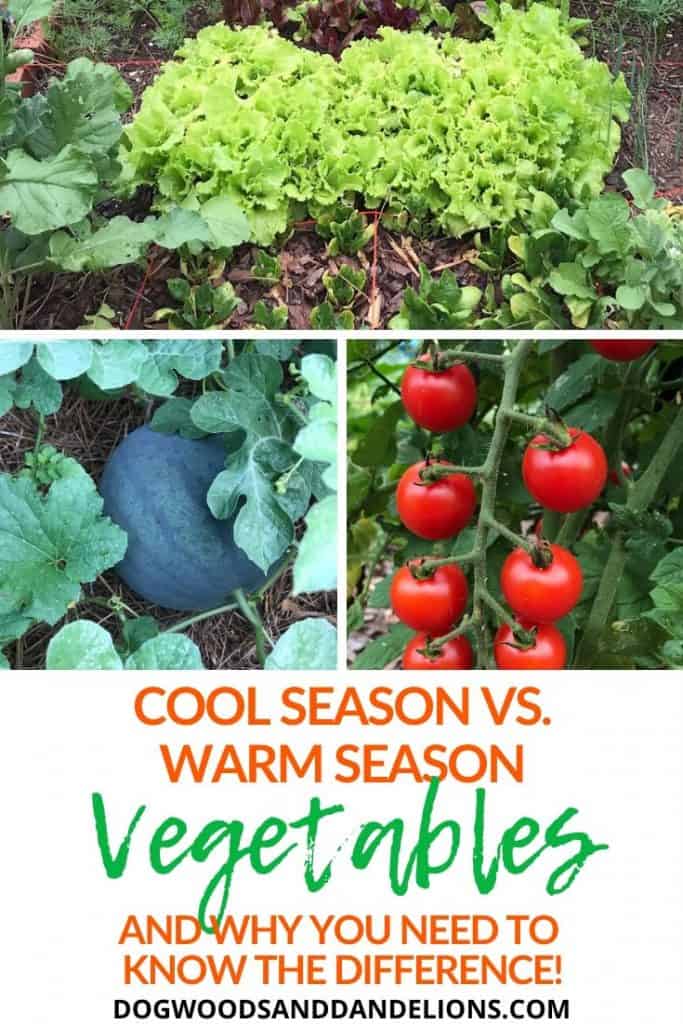
Affiliate Disclosure: Please note that some of the links in this article may be affiliate links and I may receive a small commission if you purchase something through a link. It will not change your cost. As an Amazon Associate, I earn from qualifying purchases. For more information, see my disclosures page.)
Cool Season Vegetables
Cool season vegetables can handle a bit of frost. They are typically planted in late winter or early spring but they can also be planted in late summer for a fall crop.
Cool season vegetables typically can’t take a lot of heat. They produce most abundantly with daytime temperatures around 70 degrees. Once the weather warms above 80-85 degrees, cool season vegetables will stop producing. Most will turn bitter and bolt (go to seed).
Benefits to growing cool season vegetables
There are many benefits to growing cool season vegetables. Usually in the cooler weather, you have fewer pests. Many bugs don’t come out until the weather warms up significantly.
Another benefit to cool season gardening is that you aren’t working in the summer heat. This can be a blessing to the elderly and others who can’t tolerate being outdoors during the summer temperatures.
A third plus to growing vegetables during the cooler months is that some vegetables actually benefit from frost. Kale and Brussels sprouts in particular taste sweeter after several nights of cold weather.
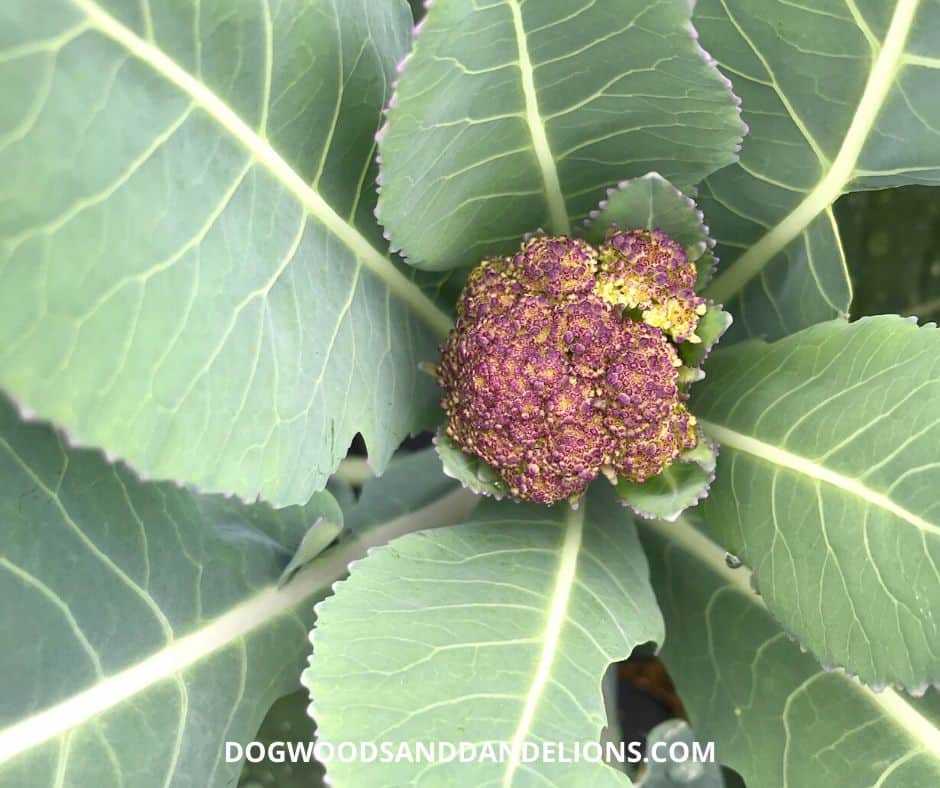
Two types of cool season vegetables
There are actually two classifications of cool season vegetables, hardy and semi-hardy.
Hardy Vegetables
Hardy vegetables have seeds that will germinate in cool soil and the plants will survive heavy frosts. A heavy frost is defined as temperatures that drop below 30 degrees for an extended period of time. However, without some protection, even hardy crops won’t typically survive temperatures below about 26 degrees.
Hardy vegetables can be planted 3-4 weeks before your last expected frost, however they won’t grow much unless daytime temperatures are in the 40’s.
Semi-Hardy Vegetables
Semi-hardy vegetables will only withstand light frosts. A light frost is when the temperature dips below freezing for several hours but not usually below 30 degrees.
Semi-hardy vegetables grow best in temperatures of at least 50 degrees during the day. Most semi-hardy vegetables can be planted in the garden about 2 weeks before your last expected frost.
What vegetables grow in cool weather?
Below is a list of many of the vegetables that will grow best in cool weather. All of these should easily survive a light frost (semi-hardy) and many will handle heavier frosts (hardy).
In the list below, I’ve denoted hardy vegetables with an H.
- asparagus-H
- beets
- broccoli-H
- Brussels sprouts-H
- cabbage-H
- carrots
- cauliflower
- celery
- Chinese cabbage
- chives
- cilantro
- collards-H
- kale-H
- kohlrabi-H
- leeks
- lettuce
- onions-H
- peas-H
- radishes-H
- scallions (bunching onions)-H
- spinach-H
- Swiss chard
- turnips-H

Warm Season Vegetables
Warm season vegetables are those that can’t tolerate much, if any, frost. Think tomatoes, peppers and watermelons. They like it hot. Planting your vegetables at the wrong time, is a recipe for failure. (And we don’t want that!) All warm season vegetables should be planted after you no longer expect frost in your area.
To determine your last expected frost date, check out this chart.
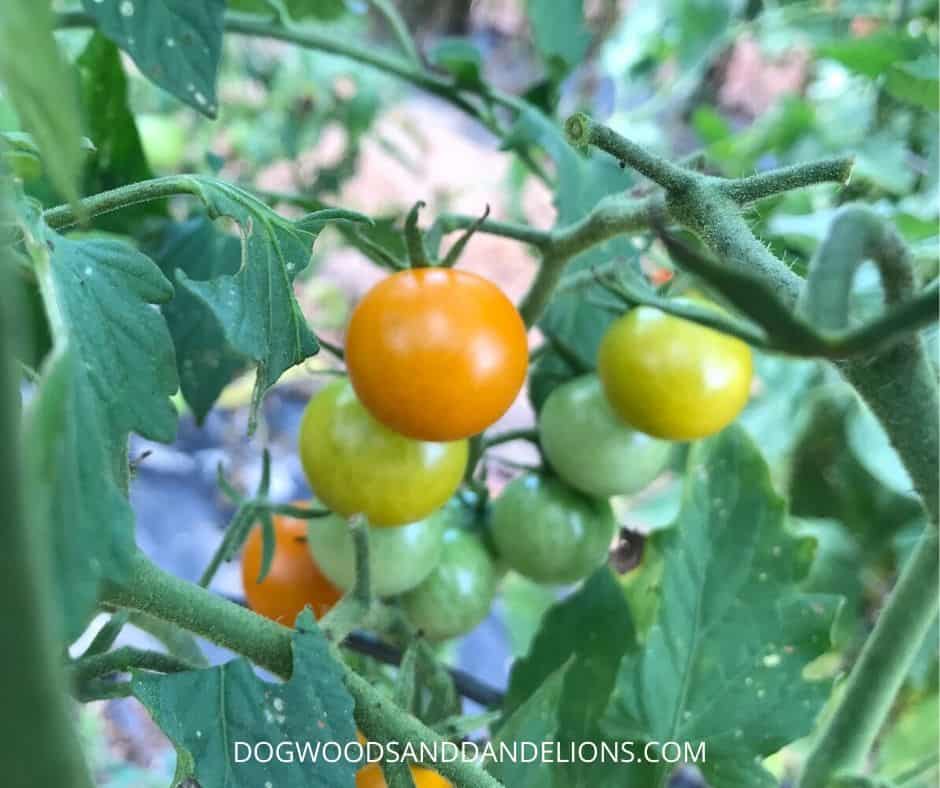
What vegetables grow best in the summer?
This list covers many vegetables that are best grown in the summer after all danger of frost has passed.
- basil
- cantaloupe
- corn
- cucumbers
- dill
- eggplant
- green beans
- lima beans
- okra
- peppers
- pumpkin
- summer squash
- sweet potato
- tomatoes
- watermelon
- winter squash
- zucchini
What to do if temperatures fluctuate?
Here in North Carolina, our temperatures can fluctuate rapidly. We can have a couple days in the 80’s followed by several nights below freezing. This makes it particularly difficult to grow cool season crops.
Unfortunately, there isn’t much you can do when the weather gets too hot unless your vegetables are grown in containers and you can move them to some shade.
But if the forecast is calling for temperatures to get too cold, you can protect the semi-hardy vegetables with row covers. Row covers come in various levels of protection, so choose the one that best suits your needs. Just be sure to remove it immediately as the temperature warms up. Too much heat can build up inside the row covers and cause your vegetables to bolt prematurely.
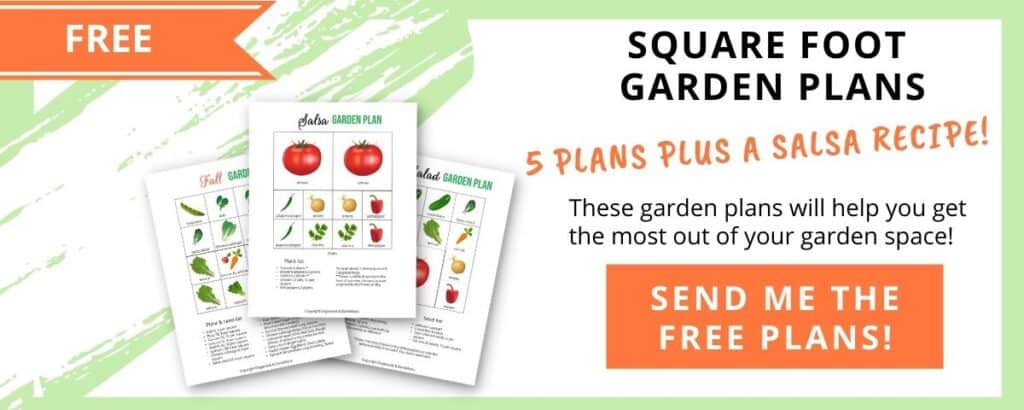
For Further Reading
- This vegetable planting chart for zone 7 will help you decided when to plant your vegetables if you have an average last expected frost date of April 15.
- Many cool season crops do extremely well when planted in the fall. This post shares what you need to know about planting a fall garden.
- If you want to try to get some homegrown produce even sooner, here are 6 tips to help you get your garden started earlier.
